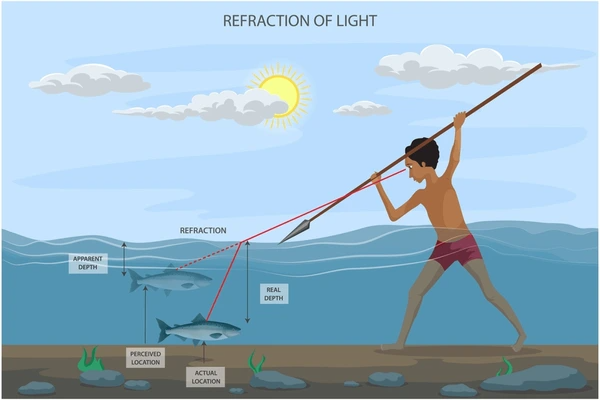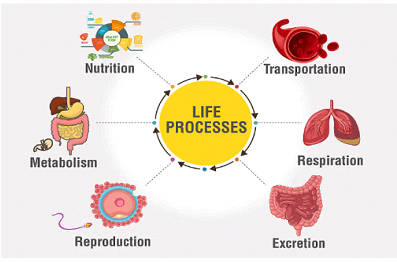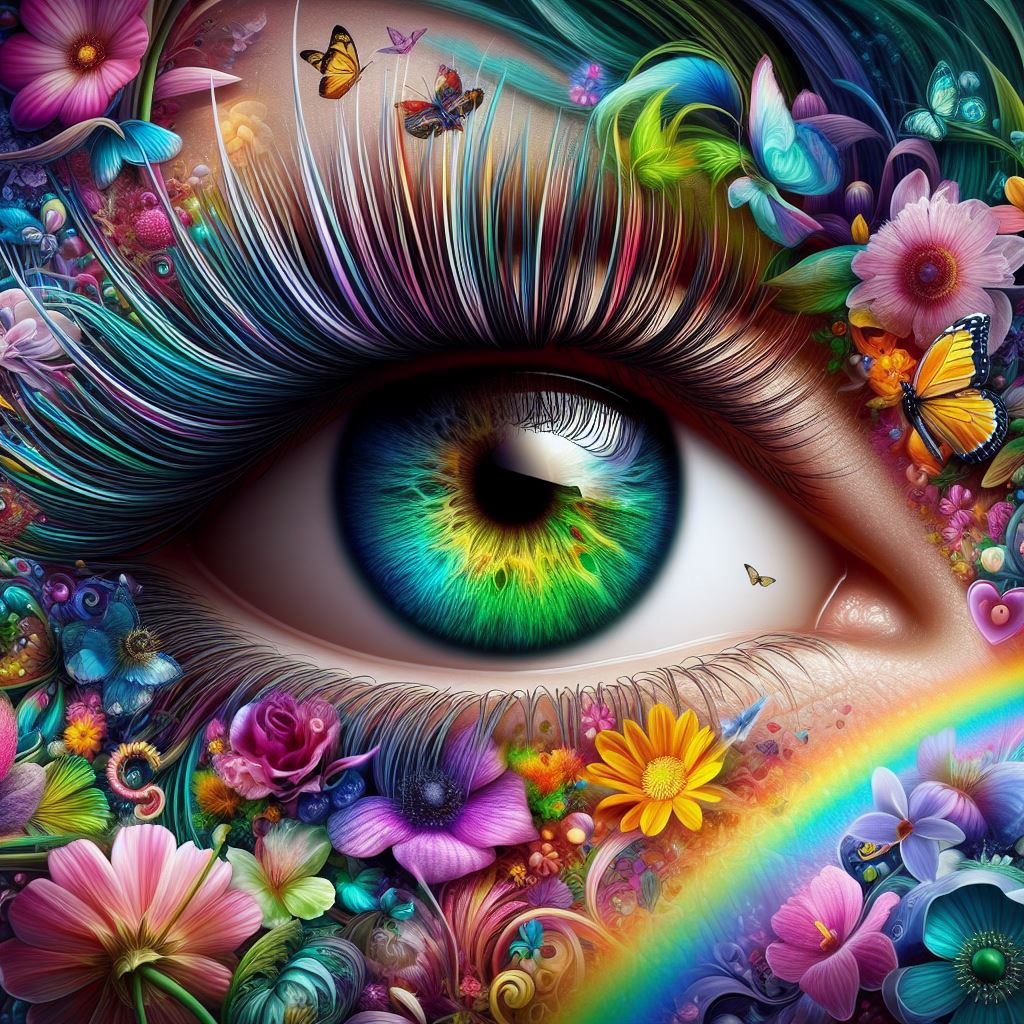Refraction of Light and Its Important laws with Examples class 10th Science Notes
Refraction of Light
What is Refraction?
Refraction is the bending of light as it passes from one medium to another. This change in direction happens because light travels at different speeds in different mediums. For example, light travels faster in air than in water, which causes the light rays to bend when moving between the two substances.
Example of Refraction
A common example of refraction can be observed when you place a straw in a glass of water. The straw appears bent at the surface of the water due to the bending of light as it passes from air to water. This effect is caused by the change in speed of light between the two mediums.

Laws of Refraction
Refraction follows two main laws, commonly known as the Laws of Refraction or Snell’s Law. These laws describe the relationship between the angle of incidence and the angle of refraction.
Law 1: The Incident and Refracted Rays Lie in the Same Plane
The incident ray, the refracted ray, and the normal (the line perpendicular to the surface at the point of incidence) all lie in the same plane. This means they are coplanar, making it easier to predict the direction in which light will bend.
Law 2: Snell’s Law
Snell’s Law states that the ratio of the sine of the angle of incidence to the sine of the angle of refraction is constant for a given pair of mediums. Mathematically, this can be expressed as:
n1 sin θ1 = n2 sin θ2
Where:
- n1 is the refractive index of the first medium.
- n2 is the refractive index of the second medium.
- θ1 is the angle of incidence.
- θ2 is the angle of refraction.
Example of Snell’s Law
Let’s take an example where light passes from air (refractive index = 1) into water (refractive index = 1.33). If the angle of incidence in air is 30°, we can use Snell’s Law to calculate the angle of refraction in water.

10 frequently asked questions (FAQs) about the topic of “Refraction of Light” along with their answers:
- What is refraction of light?
Refraction is the bending of light as it passes from one medium to another due to the change in its speed. This change in direction occurs because light travels at different speeds in different materials. - Why does light bend during refraction?
Light bends during refraction because it changes speed when it moves from one medium to another. For example, light slows down when it travels from air to water, causing it to change direction. - What are some everyday examples of refraction?
Common examples of refraction include:
- A straw appearing bent when placed in a glass of water.
- The apparent depth of water in a pool looking shallower than it actually is.
- Lenses in glasses and cameras refracting light to focus images.
- What are the two laws of refraction?
The two laws of refraction are:
- Law 1: The incident ray, the refracted ray, and the normal (perpendicular line to the surface) all lie in the same plane.
- Law 2 (Snell’s Law): The ratio of the sine of the angle of incidence to the sine of the angle of refraction is constant for a given pair of mediums.
- What is Snell’s Law?
Snell’s Law describes how light bends when passing between two different mediums. It is expressed as:n₁ sin θ₁ = n₂ sin θ₂,
wheren₁andn₂are the refractive indices of the two media, andθ₁andθ₂are the angles of incidence and refraction, respectively. - What is a refractive index?
The refractive index is a measure of how much light slows down when passing through a medium. The higher the refractive index, the slower light travels through that medium. For example, the refractive index of air is about 1, while for water, it is around 1.33. - How does refraction affect the appearance of objects in water?
Due to refraction, objects in water appear closer to the surface than they actually are. This happens because light rays bend when they pass from water to air, making the object appear shifted. - What happens to light when it moves from a denser to a rarer medium?
When light moves from a denser medium (like water) to a rarer medium (like air), it speeds up and bends away from the normal (the line perpendicular to the surface). - Can refraction occur with other types of waves besides light?
Yes, refraction can occur with any type of wave, including sound and water waves. Whenever a wave passes from one medium to another and changes speed, refraction occurs. - How is refraction used in optical devices?
Refraction is fundamental in optical devices such as eyeglasses, microscopes, telescopes, and cameras. Lenses in these devices bend light to focus it properly, allowing for clearer vision or image magnification.



